T
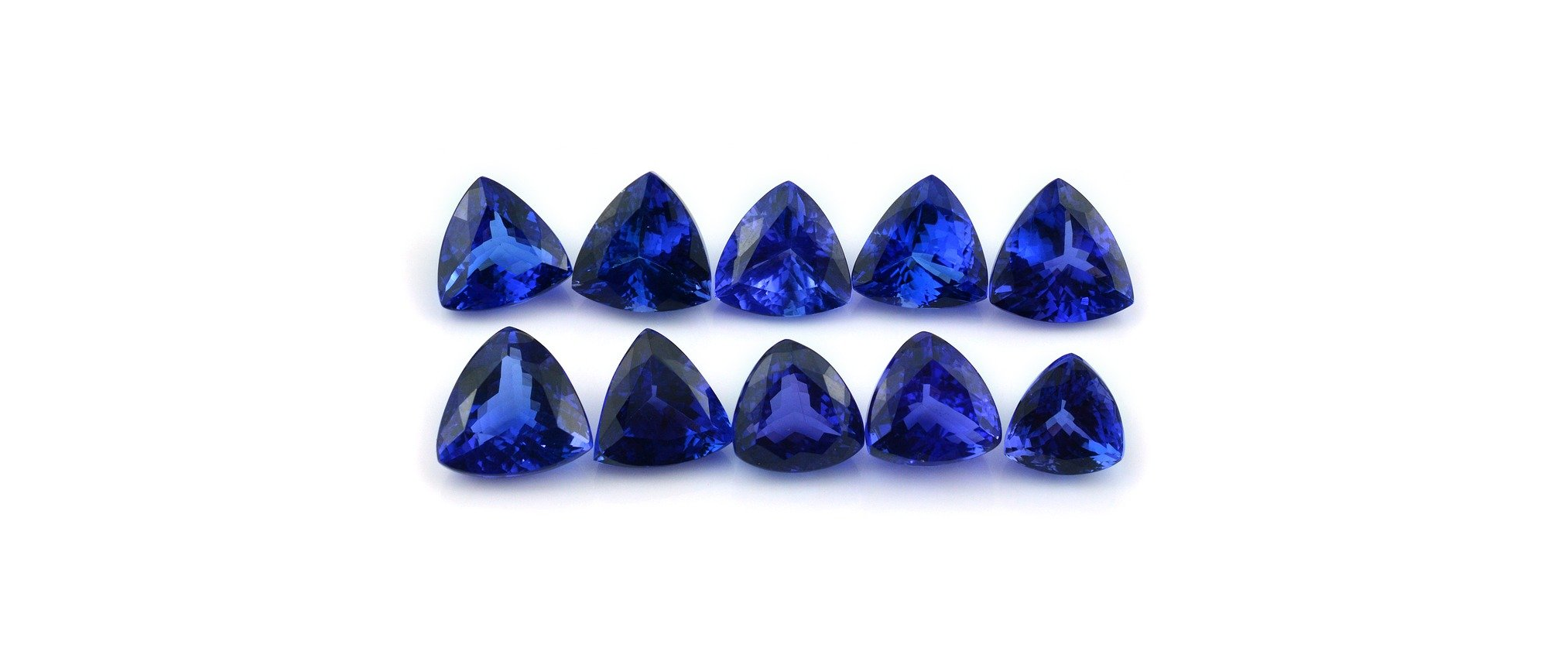
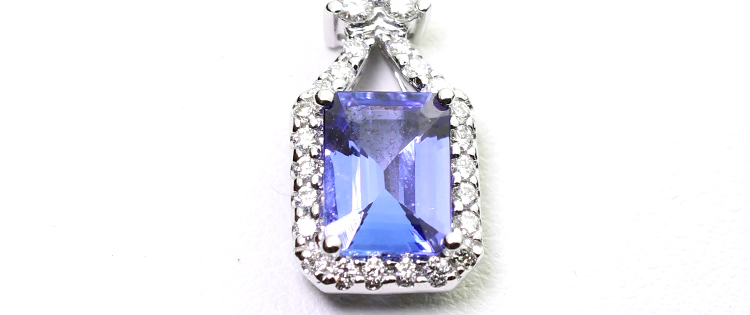
TANZANITE
Name: In 1968 Tiffany & Company started marketing blue-violet zoisite under the name “tanzanite”. Tanzanite was named after the location it is found, Tanzania, by Tiffany & Company.
Description: A variety of the mineral zoisite. A transparent blue, light to dark violetish blue and bluish purple gem. Typically shows strong pleochroism (displays different colors from different directions) usually looks violetish blue from some directions, purplish from others. It is a special-care gemstone because of its sensitivity to thermal shock and the potential for cleavage.
Variety: zoisite
Color: Tanzanite is the blue to blue-violet to purple variety of zoisite. It gets its color from vanadium and has a color range from blue to violet-blue to purple, periwinkle, lilac, and cornflower blue to deep blue, indigo and violet. Today, the most sought-after color of Tanzanite is a medium dark tone with vivid saturation and slightly violet-blue in coloring.
Treatments: Tanzanite is often heat treated to improve the blue color. This treatment is permanent.
Moh’s Hardness: 6.5 - 7.
Toughness: fair to poor, due to cleavage and sensitivity to thermal shock.
Location Found: Tanzania. Its discovery in 1967 is attributed to a Maasai tribesman.
Birthstone: December (2002, American Gem Trade Association).
Wedding Anniversaries: 8th and 24th.
Zodiac Signs: Sagittarius.
Historical Associations: new beginnings; transformation; beauty; intuition; psychic abilities; raising consciousness; dissolve old patterns/habits; health; well-being; prosperity; rarity; health; well-being; wealth; lightning.
Historically Used To Treat: strengthen the immune system; detoxify blood; regenerate cells; skin; hair.
Care: Avoid sudden or extreme temperature changes. Avoid extreme heat, steam cleaners and ultrasonic cleaners. Clean with a soft brush and warm soapy water and then dry off excess water with a soft cloth.
Imitations: Glass; Synthetic sapphire; Synthetic spinel; Synthetic spinel triplet.
Description: A variety of the mineral zoisite. A transparent blue, light to dark violetish blue and bluish purple gem. Typically shows strong pleochroism (displays different colors from different directions) usually looks violetish blue from some directions, purplish from others. It is a special-care gemstone because of its sensitivity to thermal shock and the potential for cleavage.
Variety: zoisite
Color: Tanzanite is the blue to blue-violet to purple variety of zoisite. It gets its color from vanadium and has a color range from blue to violet-blue to purple, periwinkle, lilac, and cornflower blue to deep blue, indigo and violet. Today, the most sought-after color of Tanzanite is a medium dark tone with vivid saturation and slightly violet-blue in coloring.
Treatments: Tanzanite is often heat treated to improve the blue color. This treatment is permanent.
Moh’s Hardness: 6.5 - 7.
Toughness: fair to poor, due to cleavage and sensitivity to thermal shock.
Location Found: Tanzania. Its discovery in 1967 is attributed to a Maasai tribesman.
Birthstone: December (2002, American Gem Trade Association).
Wedding Anniversaries: 8th and 24th.
Zodiac Signs: Sagittarius.
Historical Associations: new beginnings; transformation; beauty; intuition; psychic abilities; raising consciousness; dissolve old patterns/habits; health; well-being; prosperity; rarity; health; well-being; wealth; lightning.
Historically Used To Treat: strengthen the immune system; detoxify blood; regenerate cells; skin; hair.
Care: Avoid sudden or extreme temperature changes. Avoid extreme heat, steam cleaners and ultrasonic cleaners. Clean with a soft brush and warm soapy water and then dry off excess water with a soft cloth.
Imitations: Glass; Synthetic sapphire; Synthetic spinel; Synthetic spinel triplet.

Tiger’s Eye
Description: a chatoyant, semi-translucent to opaque gemstone with a silky, lustrous appearance.
Group: Quartz
Composition: SiO2 (Silicon Dioxide) Forms when parallel veins of crocidolite are altered to iron oxides and then replaced by quartz.
Color: It has a color range of golden-yellow to deep red-brown, red, blue, and green. The red variant is also known as Ox Eye and/or Bull’s Eye. The grayish-blue variant is also known as Hawk’s Eye or Falcon’s Eye. Zebra Tiger’s Eye is a variant that has grayish or blue streaks. Cat’s Eye Quartz is a variant that is brownish yellow, brownish green to greenish yellow and shows a true cat’s eye effect by being cut as a cabochon.
Treatments:
Heat (produces a reddish brown color; red tiger’s eye is often heat treated); common.
Bleaching lightens the color and it is often followed by plastic coating to seal the structure; excellent stability; commonly done.
Dyeing adds various color (usually stable; may be affected by solvents or fade with prolonged exposure to bright light) and is commonly done.
Moh’s hardness: 7.
Location Found: South Africa; Australia; Brazil; Canada; China; India; Korea; Myanmar (Burma); Namibia; Spain; Sri Lanka; United States of America (Arizona, California).
Birthstone: November.
Wedding Anniversaries: 9th, 18th.
Zodiac Signs: Aquarius, Aries, Capricorn, Gemini, Leo. Libra (blue). Taurus (all).
Chakra Associations: Root; Sacral; Solar Plexus.
Historical Associations: protection; balance; grounding; Earth; Sun; Mars; Ketu (Vedic astrology); Jupiter; fire. equilibrium; stability; self-confidence; courage; personal power; overcome obstacles; take action; clarity; focus; decision making; prosperity; good fortune; abundance; attracting wealth; good judgment; inner wisdom; intuition; psychic abilities strengthened; physical well-being; power; protection; inner authority; confidence; willpower; clarity; shield from ill wishes/intent, negative energies, shield from psychic attacks; strategic stillness; sharp awareness; harmonizes dualities (light/shadow, courage/caution); unblock creative energy; wisdom; a shield stone for travelers and leaders.
Historically Used to Treat: mental fog; improve focus; balance emotional extremes; release tension; increase vital energy; lethargy; digestive system issues; adrenal balance; lethargy; self-doubt; stress.
Care: Sudden temperature change can cause fracturing. Chemically (hydrofluoric acid, ammonium fluorite, alkalis) soluble. Risky to steam clean. Ultrasonic cleaning is usually safe. Warm, soapy water and a soft cloth.
Imitations: Glass; Plastic.


TOPAZ
Name: There are two beliefs as to where the word “topaz” came from. Some believe that it comes from the Sanskrit word “Tapas”, meaning “fire”; while others believe that it comes from the Greek word “Topazos,” which was a name for a small island in the Red Sea. “Swiss Blue” and “London Blue” Topaz are trade names for specific shades of treated blue topaz. The name for “London Blue” Topaz came from it being first created in London in the early 19th century.
Color: Topaz gets its color from trace elements (iron, chromium, titanium, manganese) and has a color range from blue, green, brown, orange, yellow, red, pink, purple, violet, grey, and white (colorless). The special trade names for topaz are: Imperial Topaz (orange body with pinkish undertones) and Sherry Topaz (yellowish-brown or brownish-yellow to orange). Today, the most sought-after color is Imperial topaz. Blue Topaz gets its color from iron and has a color range from pale blue to sky blue to London blue to indigo. Today, the most sought-after color of blue topaz today is the Swiss and London blue topaz. Swiss Blue has a bright, vivid, electric blue color with a light tone and light to moderate saturation and can sometimes look like aquamarine color-wise. London Blue is a dark blue topaz with a moderate to dark tone and saturation.
Treatments: heat, irradiation, and surface coating. Mystic Topaz made its debut in 1998 at the Hong Kong Jewelry Fair and is created by coating a natural colorless topaz with a fine mist of titanium on its surface. Blue Topaz treatments are irradiation and heat, and they are permanent.
Moh’s Hardness: 8.
Locations Found: Brazil (Minas Gerais, Ouro Preto), Japan (Takayama, Tanokamiyama), Russia (Ural Mountains, Siberia), Sri Lanka, Pakistan, Namibia, Nigeria, Madagascar, Mexico, Myanmar, Scotland (Cairngorm Mountains, especially Ben a Buird), Germany, Australia, India, Zimbabwe, and the United States of America (California, Colorado, Utah).
Birthstone: November (Imperial and Yellow Topaz; traditional stone; 1912, National Association of Jeweler’s). December (Blue Topaz; 1912 National Association of Jeweler's).
Wedding Anniversaries: 4th (Blue Topaz), 23rd (Imperial Topaz).
Zodiac Signs: Aries (Blue Topaz), Leo (Blue Topaz, Imperial Topaz, Yellow Topaz), Scorpio (Imperial Topaz, Yellow Topaz), Sagittarius (Blue, Imperial Topaz, Yellow Topaz).
Historical Associations: empathy; long life; longevity; strength (mental, physical); fidelity; faithfulness; loyalty; friendship; joy; splendor; beauty; truth; empathy; forgiveness; good fortune; intelligence; protection; wisdom; serenity; healing; divine power; warmth; break magic spells; dispel anger.
Imperial Topaz: protection; warmth; royal family; joy; happiness; vitality.
Blue Topaz: relaxation; stress reduction; increased creativity; communication skills; good luck; fortune; creativity; spiritual growth; serenity and grace; brings friendship; brings romance; prevent anger; prevent instability.
Historically Used To Treat: poison; anger; stress.
Care: High heat and sudden temperature changes can cause internal breaks. Prolonged exposure to heat or sunlight may cause fading in some yellow-to-brown gemstones. It may be slightly affected by some chemicals. Do not use steam or ultrasonic cleaners. Clean with a soft, dry cloth or warm soapy water. Store in a cool, dry place.
Mystic Topaz, only use warm soapy water. Avoid abrasive cleaners and buffing wheels. Warm water with mild soap and a very soft-bristled brush. Avoid using steam or ultrasonic cleaners. Avoid extreme heat and direct sunlight as this can cause the topaz to lose its color. Avoid wearing in a pool or salt water.
London Blue Topaz: clean with a soft, dry cloth or warm soapy water. Keep away from chemicals, heat, and light. Store in a cool, dry place.
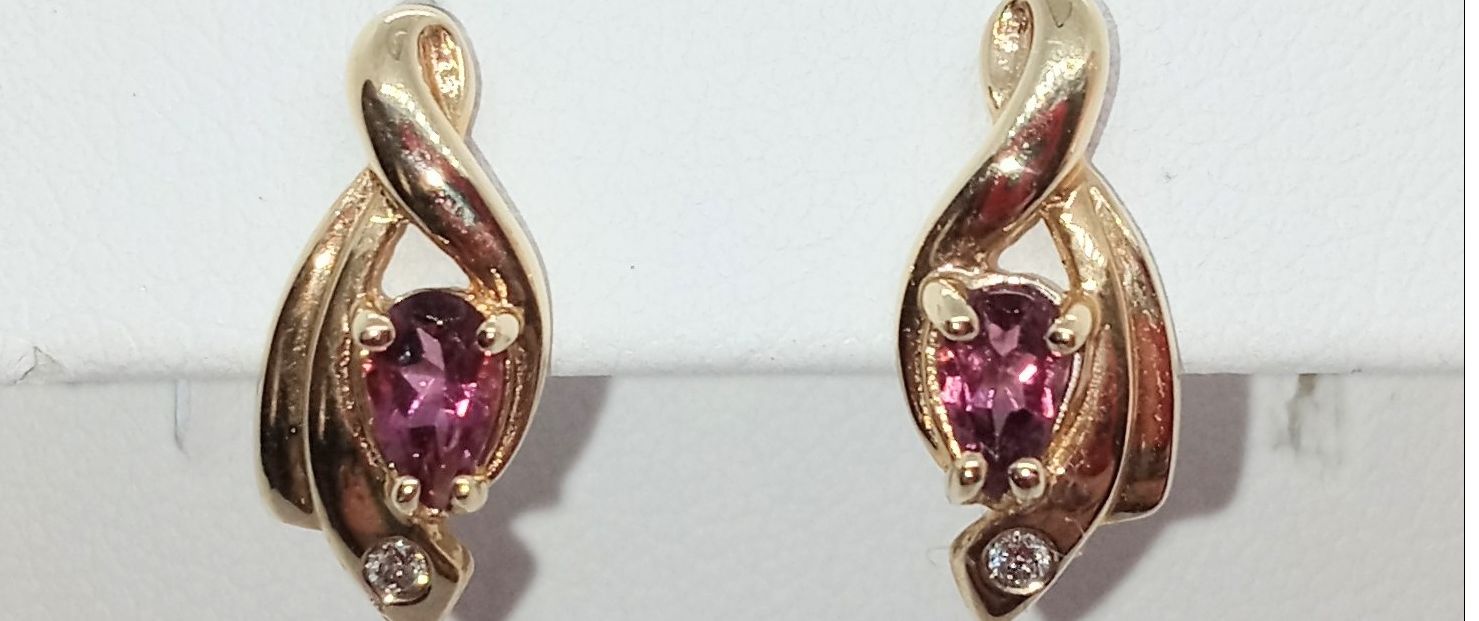
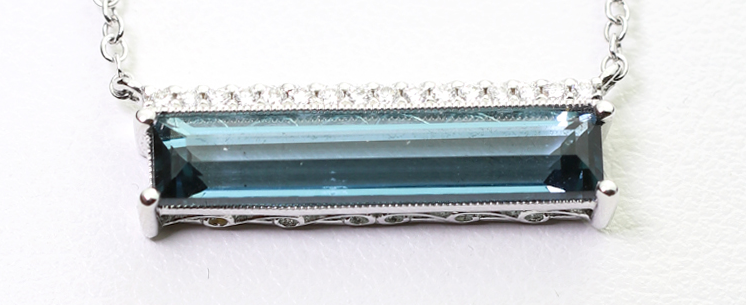
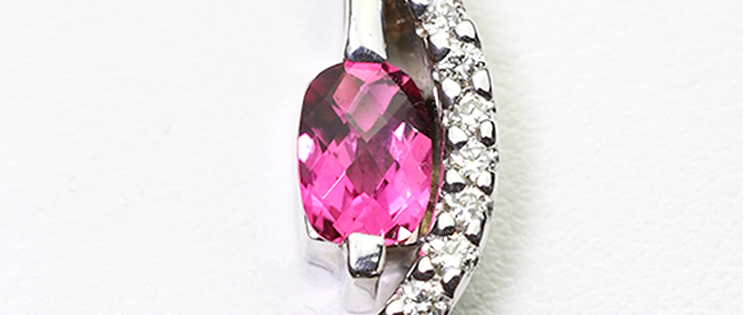
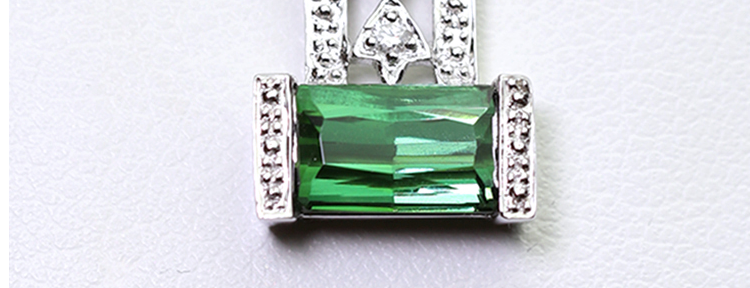
TOURMALINE
Name: The origin of the word Tourmaline is uncertain. It is believed to come from the Sinhalese word “turamali” which means “mixed colored stones”.
Color: Tourmaline is a group of mineral species. It gets its color from a variety of minerals depending upon the color of the tourmaline. Green tourmaline gets its color from chromium. Tourmaline has a color range which includes colorless, green, blue, purple, pink, red, orange, yellow, green, brown, black, bi- or multi-colored, and color-change. Rubellite is the trade name for tourmaline that is red in both daylight and incandescent light, however, some will call any strong colored pink to red tourmaline this. Indicolite is the trade name for shades of blue tourmaline. Paraiba tourmaline is the rarest and most expensive tourmaline. Black tourmaline goes by the mineralogical name Schorl. Today, the most sought-after color of Tourmaline is pink, specifically a vivid magenta color.
Treatments: heat, irradiation, and sometimes fracture filling. Irradiation is common in tourmaline in shades of red, pink, and purple.
Moh’s Hardness: 7 to 7.5.
Locations Found: Brazil, Afghanistan, Pakistan, East Africa, Nigeria, Madagascar, Mozambique, Sri Lanka, the Soviet Union, and in the United States of America (California, Maine, New Hampshire).
Birthstone: October (Pink Tourmaline; 1912, the National Association of Jeweler’s).
Wedding Anniversaries: 8th.
Zodiac Signs: Libra, Scorpio.
Chakra Associations: Crown (colorless, purple). Third-Eye (blue, purple). Throat (blue, indicolite). Heart (green, pink, red). Solar Plexus (yellow, orange). Sacral (orange, red). Root (black, red).
Historical Associations: protection; love; connection; compassion; healing.
Pink Tourmaline: love; compassion; kindness; happiness; joy; relaxation; emotional healing; passion.
Care: Avoid exposure to extreme temperatures and sudden temperature changes to prevent fracturing. Avoid harsh chemicals or abrasive materials. Ultrasonic is risky. Clean gently with mild soap and water using a soft brush or cloth. Store it in a soft pouch, or box, away from other jewelry that can scratch or damage the tourmaline. Do not sore in direct sunlight or extreme temperatures.


TURQUOISE
Name: Turquoise comes from the French expression “pierre tourques”, or “Turkish stone”, and originated in the 13th century. Ancient Egyptians called turquoise “mefkat”, which means “joy” and “delight”.
Color: Turquoise gets its color from copper, aluminum, zinc, and iron and has a color range in shades of blue to green. The presence of iron gives it a greenish hue whereas zinc causes more of a yellowish hue. Its color can change over time due to body oils and other moisture absorbed into the stone. Today, the most sought-after color of Turquoise is Robin's Egg Blue, Sky Blue, or Persian Blue.
Treatments: wax, dye, and stabilization.
Moh’s Hardness: 5 - 6.
Locations Found: Iran, China, Mexico, Middle East, Kazakhstan, and United States of America. Ancient Egyptians mined Turquoise (in the Sinai region) around 5500 BCE.
Birthstone: December (traditional; 1912, the American National Association of Jewelers).
Wedding Anniversaries: 11th.
Zodiac Signs: Sagittarius.
Chakra Associations: Heart. Throat.
Historical Associations: rain; sky; protection; healing; good fortune; prosperity; good health; peace; uncluttering the mind; ease stress; friendship; happiness; good luck; fertility; vegetation; joy; delight; getting rid of bad habits; seeing one’s life from a higher perspective; Hathor; Estsanatlehi; Sky God; Creator; wind spirits; improve accuracy of warrior's bows, swords, and firearms; protection from evil spirits; protection children from falling; Earth; a sky-earth connection.
Historically Used to Treat: stress; bad habits; depression; melancholy.
Care: Avoid high heat, oils, grease, perfume, chemicals, and extreme temperate changes. Avoid steam and ultrasonic cleaners. Use warm soapy water on a very soft cloth to clean and immediately dry with a soft cloth. Handle with care as it scratches easily and can be fragile; store it in a cool, stable, dry place apart from other jewelry when possible. Color: Turquoise gets its color from copper, aluminum, zinc, and iron and has a color range in shades of blue to green. The presence of iron gives it a greenish hue whereas zinc causes more of a yellowish hue. Its color can change over time due to body oils and other moisture absorbed into the stone. Today, the most sought-after color of Turquoise is Robin's Egg Blue, Sky Blue, or Persian Blue.
Treatments: wax, dye, and stabilization.
Moh’s Hardness: 5 - 6.
Locations Found: Iran, China, Mexico, Middle East, Kazakhstan, and United States of America. Ancient Egyptians mined Turquoise (in the Sinai region) around 5500 BCE.
Birthstone: December (traditional; 1912, the American National Association of Jewelers).
Wedding Anniversaries: 11th.
Zodiac Signs: Sagittarius.
Chakra Associations: Heart. Throat.
Historical Associations: rain; sky; protection; healing; good fortune; prosperity; good health; peace; uncluttering the mind; ease stress; friendship; happiness; good luck; fertility; vegetation; joy; delight; getting rid of bad habits; seeing one’s life from a higher perspective; Hathor; Estsanatlehi; Sky God; Creator; wind spirits; improve accuracy of warrior's bows, swords, and firearms; protection from evil spirits; protection children from falling; Earth; a sky-earth connection.
Historically Used to Treat: stress; bad habits; depression; melancholy.
